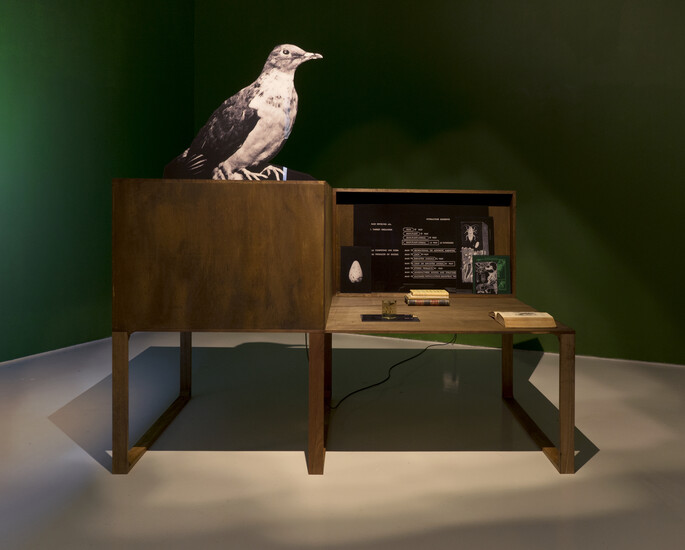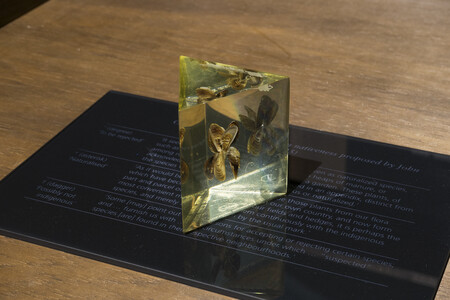Extinctions and invasions are both ideas that test the limits of the current narratives we use to talk about relationship with nature. This work interweaves various narratives and histories to talk about this complexity.
1.
On Sept 1, 1914, the last known passenger pigeon died at the Cincinnati Zoo in the United States. Once the most abundant bird in North America and possibly the world, it was estimated to have numbered three to five billion at the height of its population. The birds declined as a result of hunting and widespread deforestation.
2.
On July 3, 1844, fishermen killed the last pair of great auks at Eldey Island, Iceland. For centuries, the bird was hunted for both meat and bait. Early museums and collectors contributed to the birds’ decline as museums sought to preserve and display the skins and eggs of this bird. Only 78 skins and 75 eggs remain in collections worldwide. This is a replica of an auk egg by American naturalist John Hancock, who was famous for plaster casting and hand-painted fake eggs that were indistinguishable from the originals.
3.
In the winter of 2017, some 114 tons of clams were dropped by volunteers in the mudflats of Yalu River, Dandong. The place is a vital feeding site for arriving godwits and great knots, migratory birds that need to refuel during their long journey between Australia and Siberia. Clam numbers have been decreasing due to severe winters in the past few years.
4.
Originally native to waters in Russia and Ukraine, Zebra mussels have spread to many places, aided by the discharge of ballast water from cargo ships from Europe. It has a bad reputation as an invasive that crowds out native species, and damages infrastructure such as harbours and waterways. On the flip side, it also thrives in the most polluted of waters and in certain environments, helps to clean the water up. A filter feeder, it removes contaminants by sucking nearly a litre of water each day in search of plankton.
Detail pictures:







